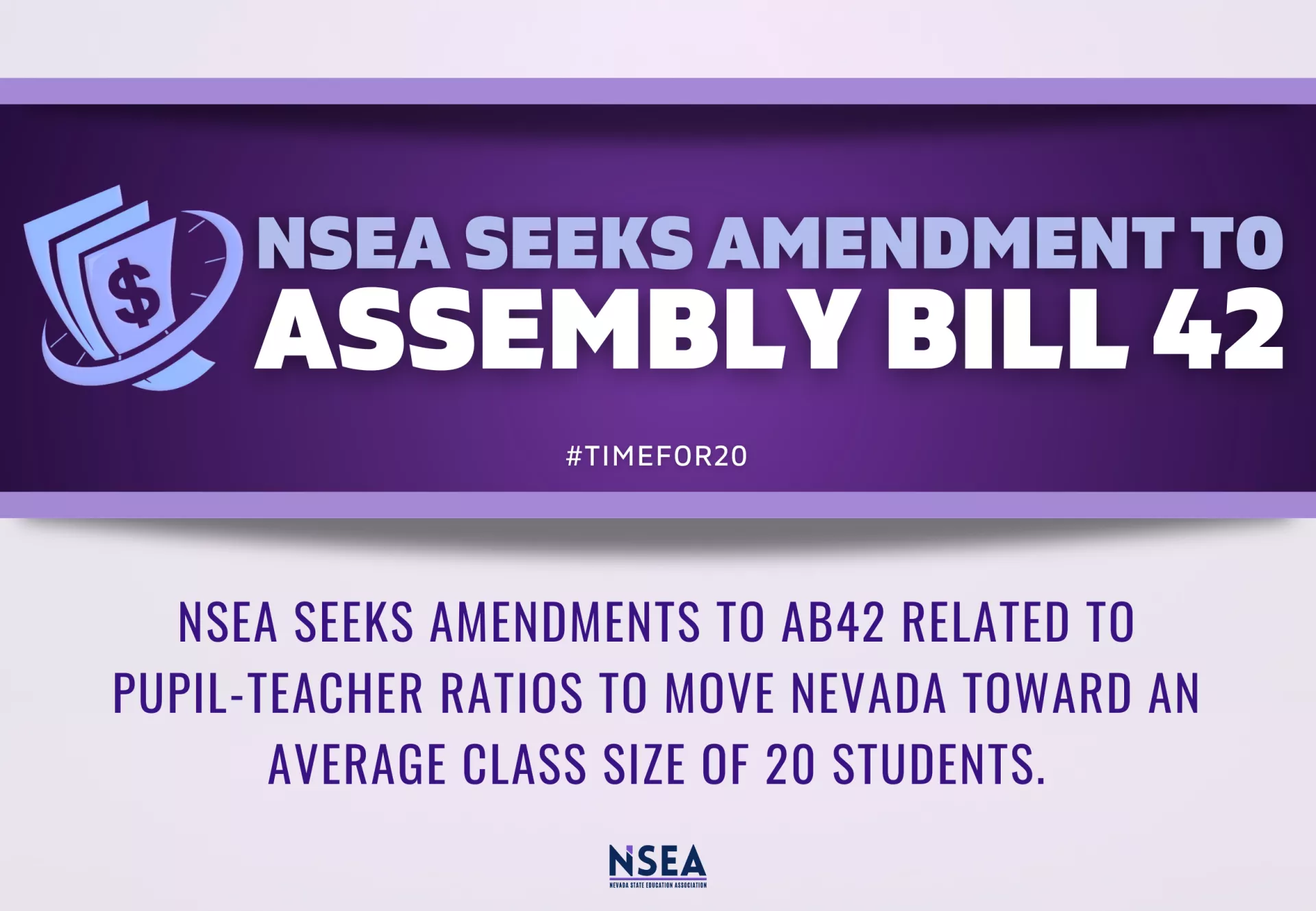Common sense tells us—and research confirms it—the number of students in a class makes a real difference for students and educators alike. We know reducing class size has real benefits. For students, smaller class size can help close the racial achievement gap, lead to earlier identification of learning disabilities, improve high school graduation rates, improve student behavior, and allow for more engagement in lessons. For educators, smaller class size improves educator morale as it allows for more individual and differentiated instruction, less time on paperwork, and stronger classroom management, as teachers become more aware of individual students’ strengths or weaknesses. Smaller class sizes also means safer schools.
This is why NSEA includes reaching average class sizes of 20 students in our marquee Time for 20 campaign. Another provision of Time for 20 to increase educator pay would increase the pool of qualified teachers applying for open teaching positions, which is necessary to reduce class size.
While there are certainly important provisions in AB42, including making pupil-teacher ratios applicable to charter schools, NSEA disagrees with increasing the maximum ratios in grades K-3. With some of the largest class sizes in the nation, Nevada should be doing everything possible to reduce class sizes across all grade levels. Increasing ratios is movement in the wrong direction. We are also concerned that moving from quarterly to annual reporting and variances lifts pressure from both school districts and the state to do better. While most variances are related to the lack of available financial resources, frequent attention on Nevada’s large class sizes is necessary to create the political will to increase education funding. Unfortunately, nothing in AB42 forces school districts or the state to better adhere to pupil-teacher ratios.
NSEA asks the committee to strike provisions raising class size ratios in grades K-3 and moving from quarterly to annual reporting and variances, while including a goal of reaching average class sizes of 20 students.

